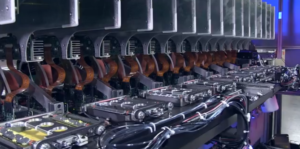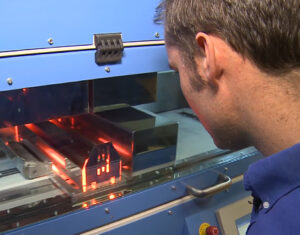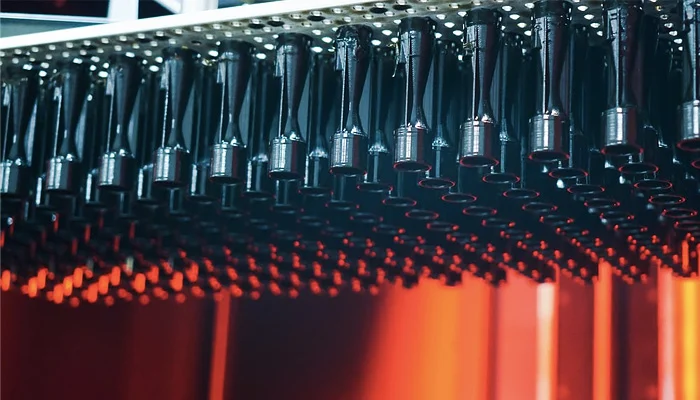3D printing, also known as additive manufacturing, has revolutionized the manufacturing industry by offering new possibilities for mass production. With its ability to create complex designs, reduce waste, and increase production speed, 3D printing has the potential to transform the way goods are produced and distributed. In this article, we will explore the challenges and opportunities of 3D printing in mass production.
Opportunities of 3D Printing in Mass Production
Greater Design Flexibility
One of the key opportunities of 3D printing in mass production is its ability to provide greater design flexibility. With traditional manufacturing methods, certain design elements may be difficult or impossible to produce. However, with 3D printing, designers can create intricate and complex shapes and structures that would be difficult to achieve using traditional methods. This can lead to more innovative and efficient product designs.
Reduced Waste
3D printing can also help to reduce waste in mass production. With traditional manufacturing methods, a significant amount of material may be wasted during the production process. However, with 3D printing, materials can be used more efficiently, resulting in less waste. This can lead to cost savings and improved sustainability.
Production Speed

3D printing can also increase production speed in mass production. With traditional manufacturing methods, the production process may be slow and labour-intensive. However, with 3D printing, products can be produced quickly and efficiently, leading to faster turnaround times and greater production capacity.
Customization
3D printing also allows for greater customization in mass production. With traditional manufacturing methods, mass-produced products are often identical. However, with 3D printing, each product can be customized to the specific needs and preferences of the customer. This can lead to greater customer satisfaction and improved product performance.
Challenges of 3D Printing in Mass Production
Cost: One of the key challenges of 3D printing in mass production is the cost of the technology. While the cost of 3D printers has decreased in recent years, they can still be expensive, particularly for larger-scale production. In addition, the cost of materials and maintenance can also be high.
Limited Materials: The materials that can be used in 3D printing are currently limited compared to traditional manufacturing methods. This can make it difficult to achieve certain design elements or to produce products with certain properties. In addition, the quality of the final product may be affected by the quality of the materials used.
Quality Control: Ensuring consistent quality in 3D printed products can be challenging, particularly for larger-scale production. The quality of the final product may be affected by factors such as printer calibration, material quality, and design errors. This can make it difficult to ensure consistent quality across different productions.
Regulations: There may be regulations in place in some jurisdictions that require products to meet certain safety or environmental standards. This can make it difficult to adopt 3D printing in mass production, particularly for larger-scale production.
Future Trends in 3D Printing and Mass Production
As 3D printing and mass production continue to evolve, there are several future trends that are emerging in the industry. Here are some of the key trends:
Integration with Smart Technology
The integration of 3D printing with smart technology is an emerging trend in mass production. By incorporating sensors and other technology into 3D printed products, manufacturers can create products that are more responsive and adaptable to different environments and user needs.

Sustainable Materials
The use of sustainable materials in 3D printing is also an emerging trend in mass production. With manufacturers becoming more environmentally conscious, there is growing interest in using sustainable materials in product production.
Lower Cost of Technology
As 3D printing technology continues to evolve, the cost of printers and materials is likely to decrease. This will make it more accessible to small and medium-sized businesses, as well as individual consumers, leading to greater adoption of the technology in mass production.
Exploring the Possibilities of 3D Printing in Mass Production
3D printing is already being used in a wide range of industries, from aerospace to healthcare. Here are some examples of how 3D printing is being used in mass production:
Automotive Industry
3D printing is being used in the automotive industry to create customized parts and components for vehicles. This can help to improve efficiency and reduce waste in the production process.
Consumer Goods
3D printing is being used in the consumer goods industry to create customized products, such as jewellery and phone cases. This can help to improve customer satisfaction and create unique products that stand out in the market.
Aerospace Industry
3D printing is being used in the aerospace industry to create complex components for aircraft, such as engine parts and wing structures. This can help to reduce weight and increase efficiency in the production process.
Looking ahead, there are several other possibilities for 3D printing in mass production. One area of potential is in the creation of customized medical devices and prosthetics. 3D printing can be used to create customized implants and prosthetics that are tailored to the specific needs and anatomy of the patient, leading to improved recovery and functionality.
Another possibility is in the creation of customized tooling and moulds for mass production. 3D printing can be used to create customized tooling and moulds that are tailored to the specific needs of the product, leading to improved efficiency and reduced waste in the production process.
There is also potential for 3D printing to be used in the production of spare parts and replacement components. With 3D printing, manufacturers can produce replacement components quickly and efficiently, reducing downtime and improving customer satisfaction.
Conclusion
The use of 3D printing in mass production is transforming the way goods are produced and distributed. With greater design flexibility, reduced waste, increased production speed, and greater customization, 3D printing offers many advantages over traditional manufacturing methods. While there are challenges and considerations to keep in mind, the future possibilities are endless. With the integration of smart technology and sustainable materials, 3D printing has the potential to help manufacturers create products that are more responsive, adaptable, and environmentally friendly.






